Contents
Volvariella gray-bluish (Volvariella caesiotincta)
- Division: Basidiomycota (Basidiomycetes)
- Subdivision: Agaricomycotina (Agaricomycetes)
- Class: Agaricomycetes (Agaricomycetes)
- Subclass: Agaricomycetidae (Agaricomycetes)
- Order: Agaricales (Agaric or Lamellar)
- Family: Pluteaceae (Pluteaceae)
- Genus: Volvariella (Volvariella)
- Type: Volvariella caesiotincta (Volvariella gray-bluish)
:
- Volvaria murinella var. umbonata J.E. Tall (1940)
- Volvariella murinella ss Kuhner & Romagnesi (1953)
- Volvariella murinella var. umbonata (JE Lange) Wichanský (1967)
- Volvariella caesiotinca PD Orton (1974)
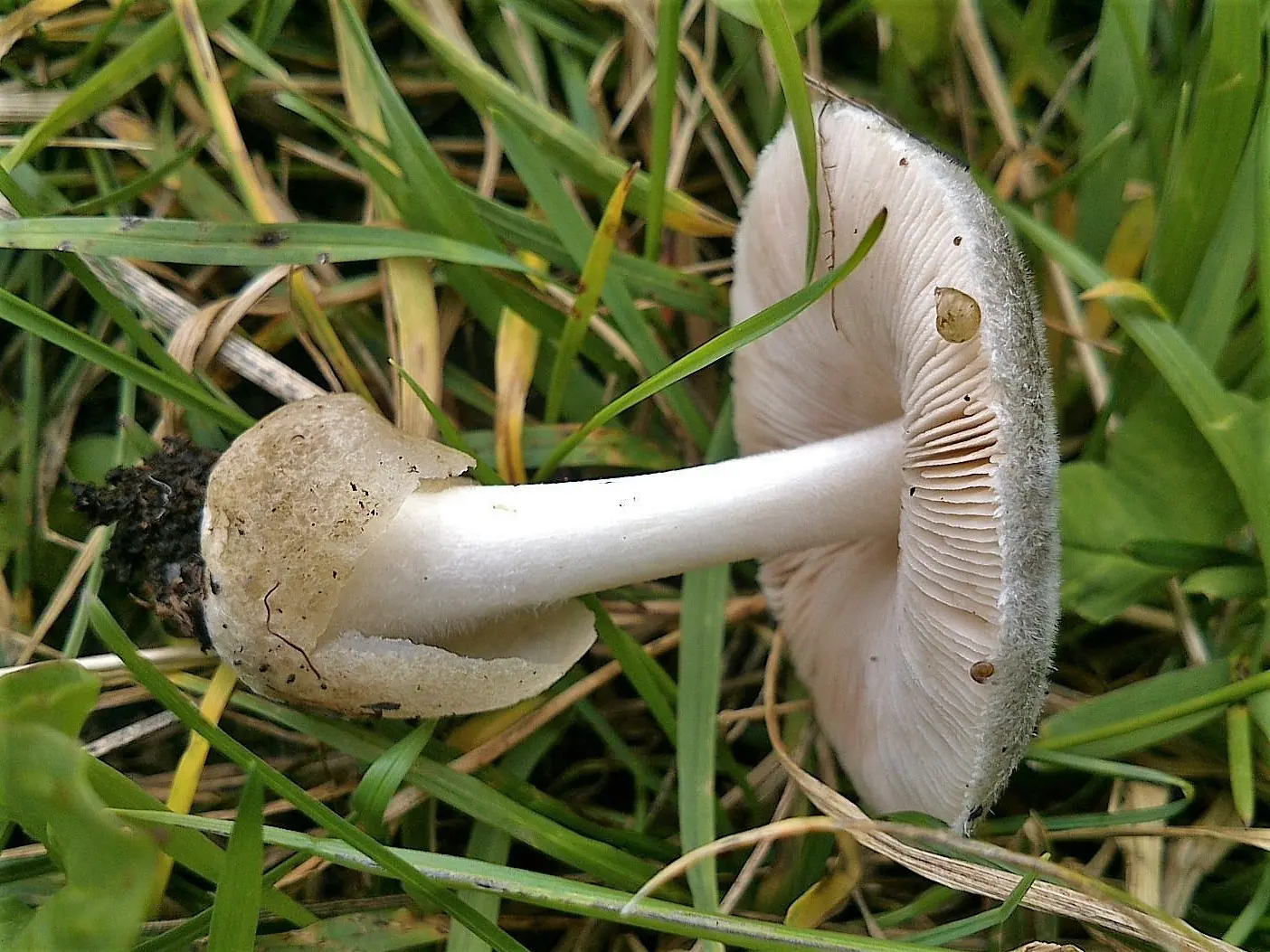
The current name is Volvariella caesiotincta PD Orton (1974)
The etymology of the specific epithet comes from volva, ae f 1) cover, sheath; 2) mic. volva (the rest of the common veil at the base of the leg) and -ellus, a is a diminutive.
Caesius a, um (lat) – blue, gray-blue, tīnctus, a, um 1) wetted; 2) painted.
Young mushrooms develop inside a common coverlet, which breaks as it matures, leaving remnants in the form of a Volvo on the stem.
head 3,5-12 cm in size, at first hemispherical, bell-shaped, then flat-convex prostrate, with a blunt gentle tubercle in the center. Gray, gray-blue, sometimes brownish, greenish. The surface is dry, velvety, covered with small hairs, felted in the center. .
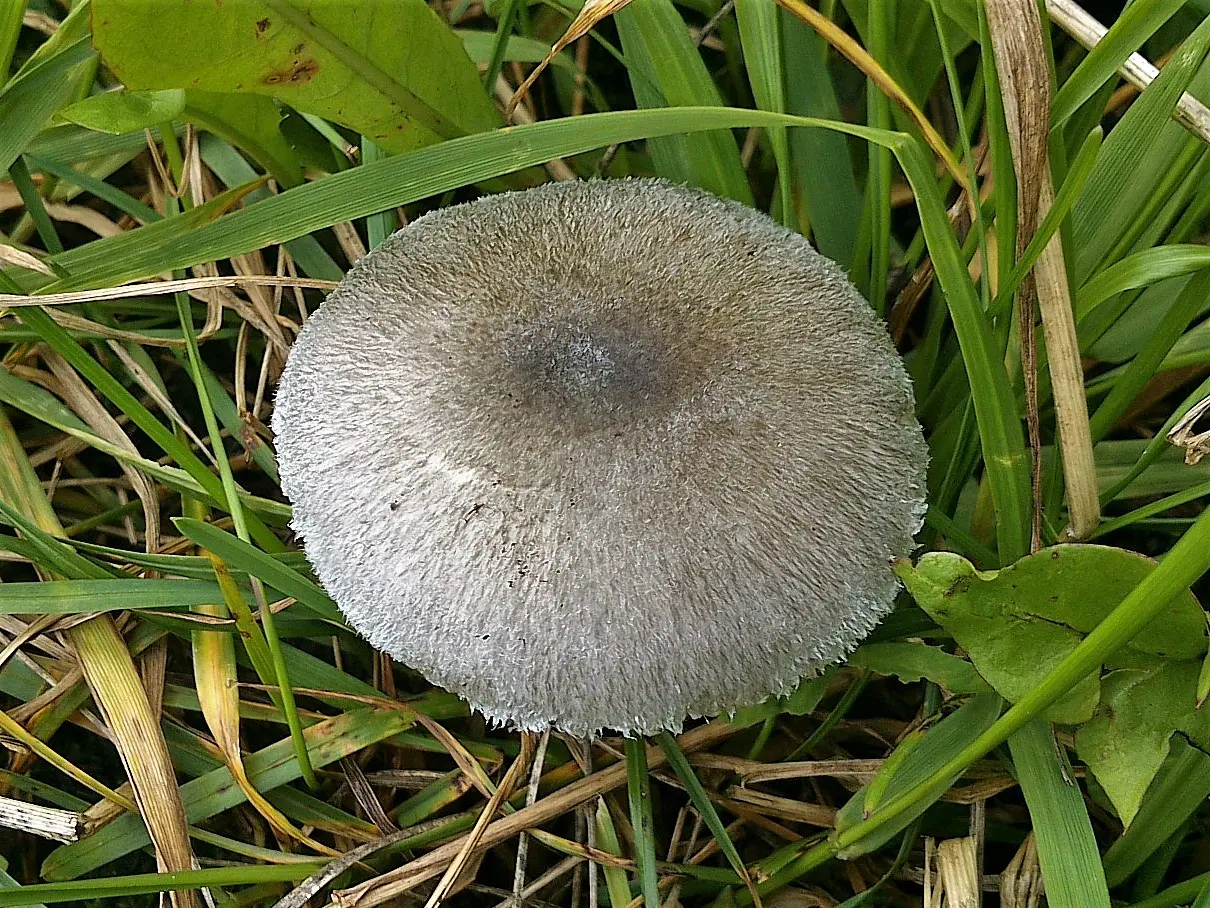
Hymenophore mushroom – lamellar. The plates are free, wide, numerous, often located. In young mushrooms, they are white, with age they acquire a light pink, salmon color. The edge of the plates is even, one-color.
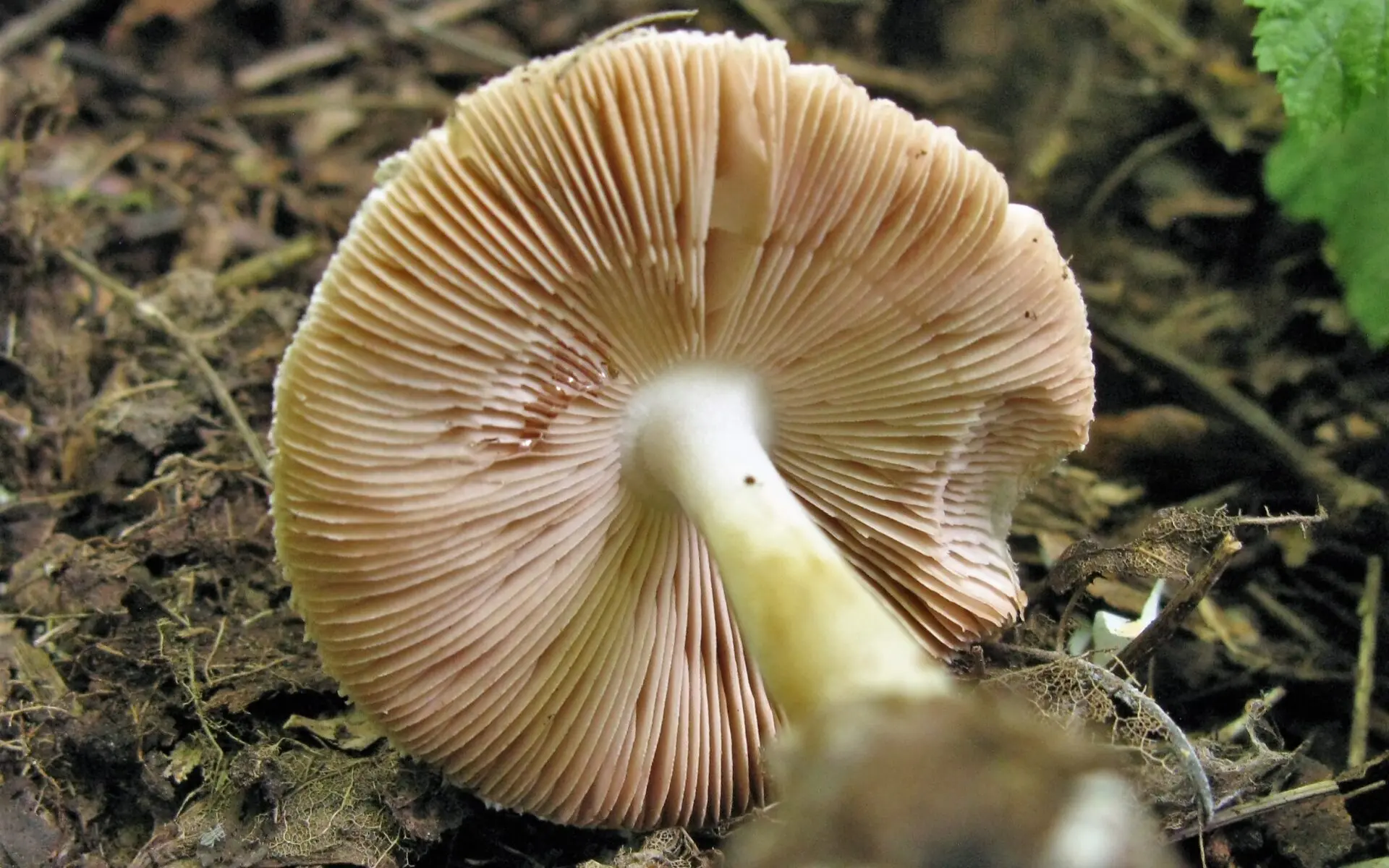
Pulp thin white with a pinkish tinge, grayish under the cuticle. Does not change color when damaged. The taste is neutral, the smell is sharp, reminiscent of the smell of pelargonium.
Leg 3,5–8 x 0,5–1 cm, cylindrical, central, slightly enlarged at the base, up to 2 cm wide at the base, velvety at first, later smooth, white, then creamy, wrapped in membranous volva ash-gray, sometimes greenish . Volvo height – up to 3 cm.
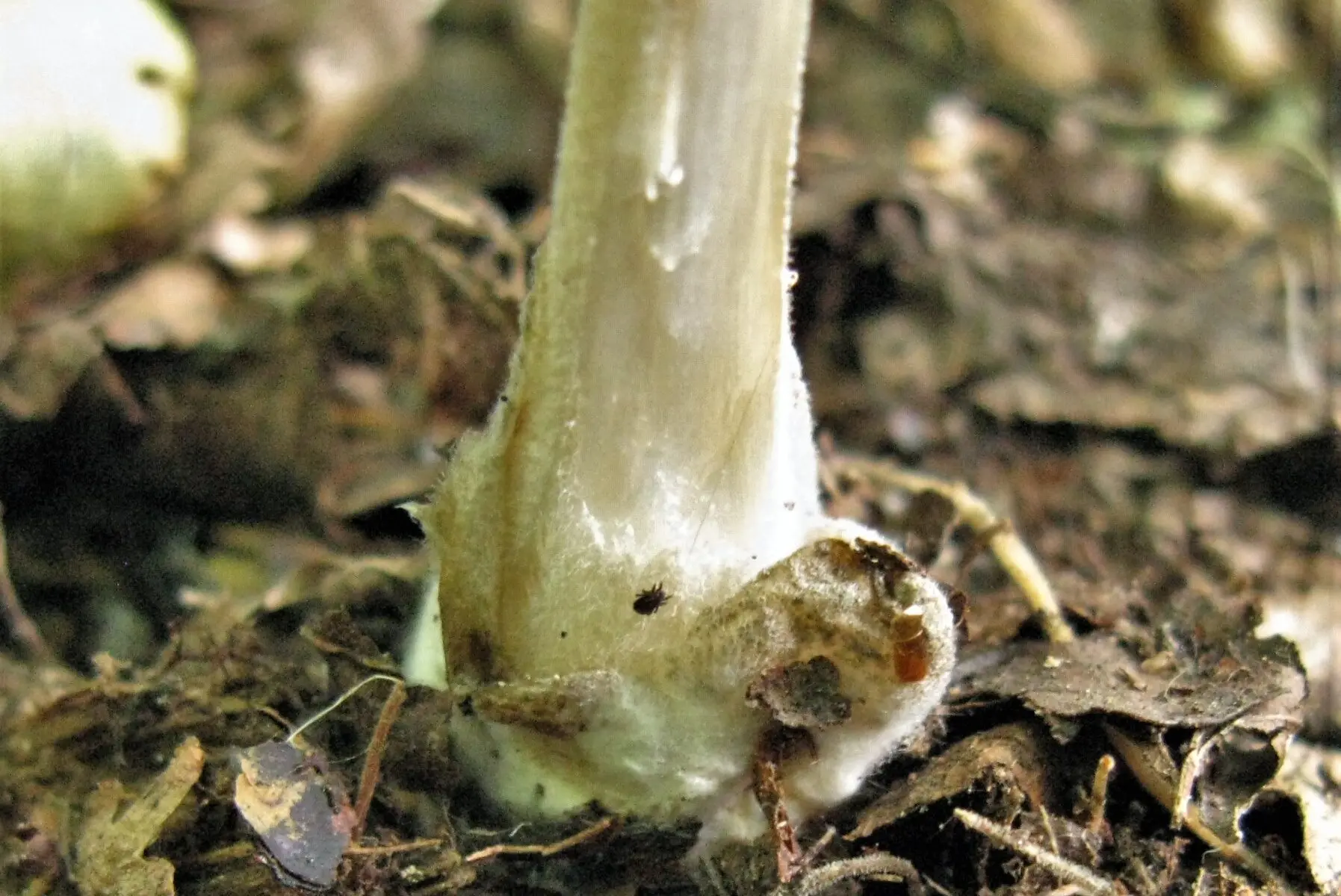
Ring missing on the leg.
Microscopy
Spores 5,4-7,5 × 3,6-5,20 µm, oval, ellipsoid-ovate, thick-walled
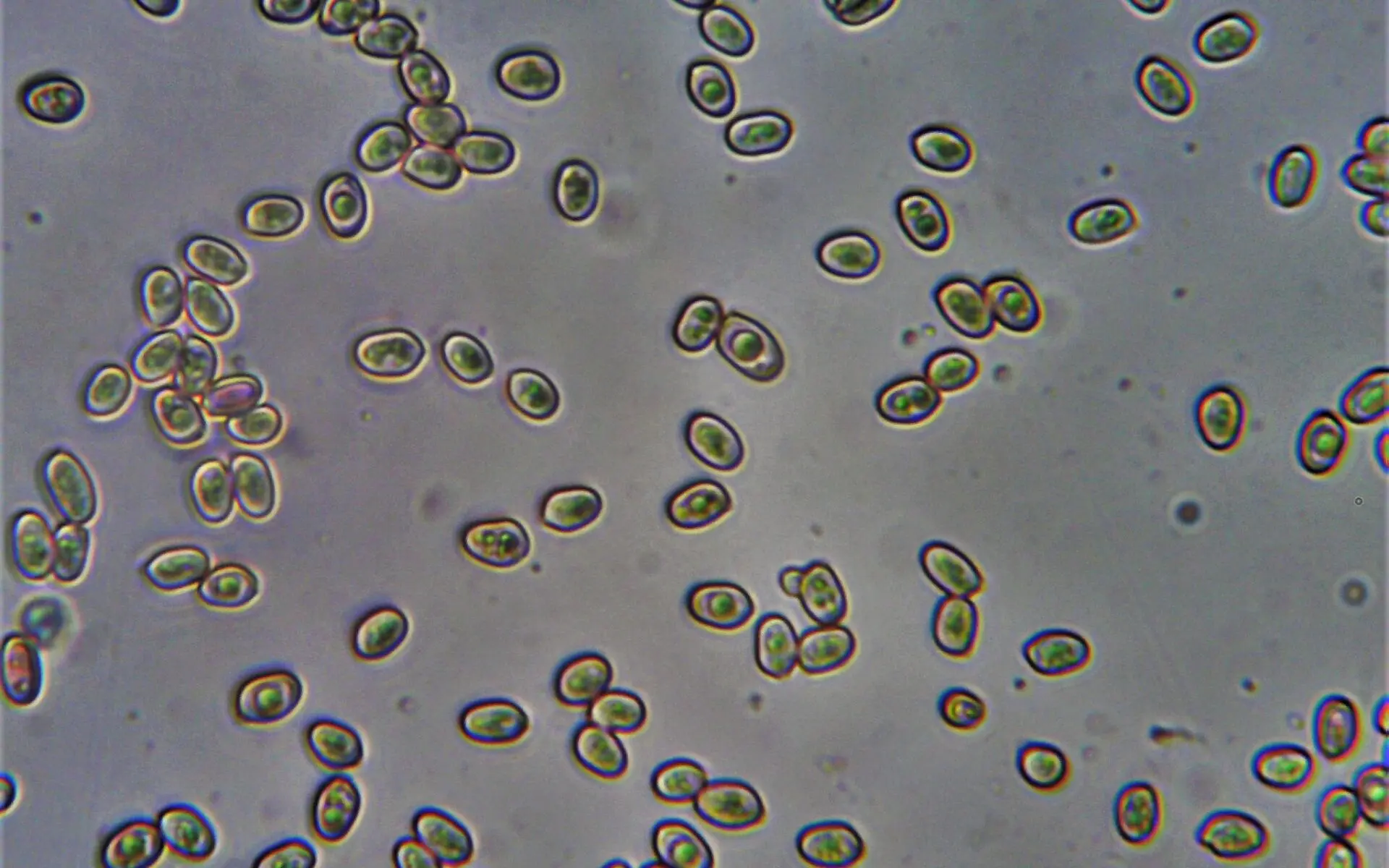
Basidia 20-25 x 8-9 μm, club-shaped, 4-spored.
Cheilocystidia are polymorphic, often with a papillary apex or digitiform process.
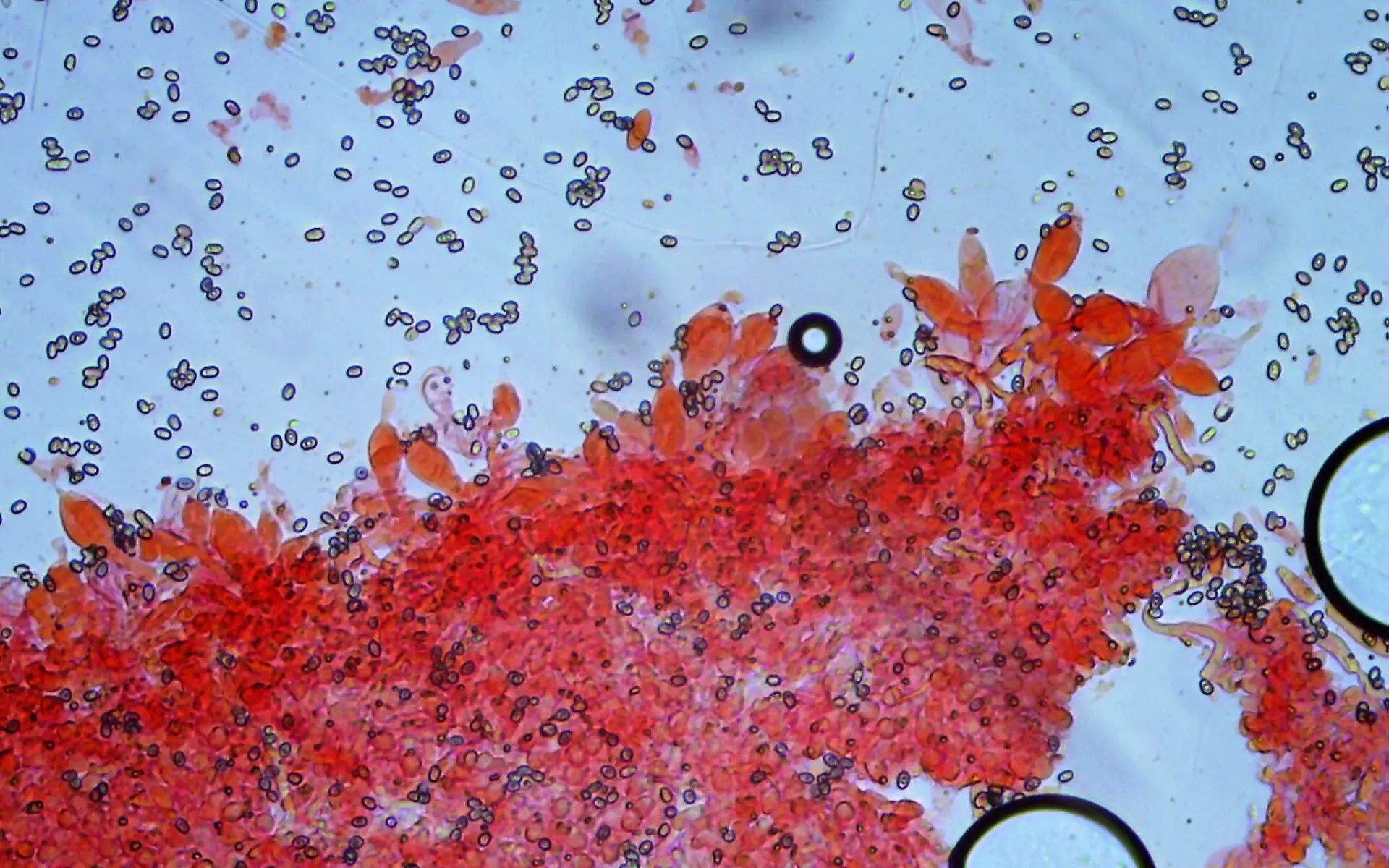
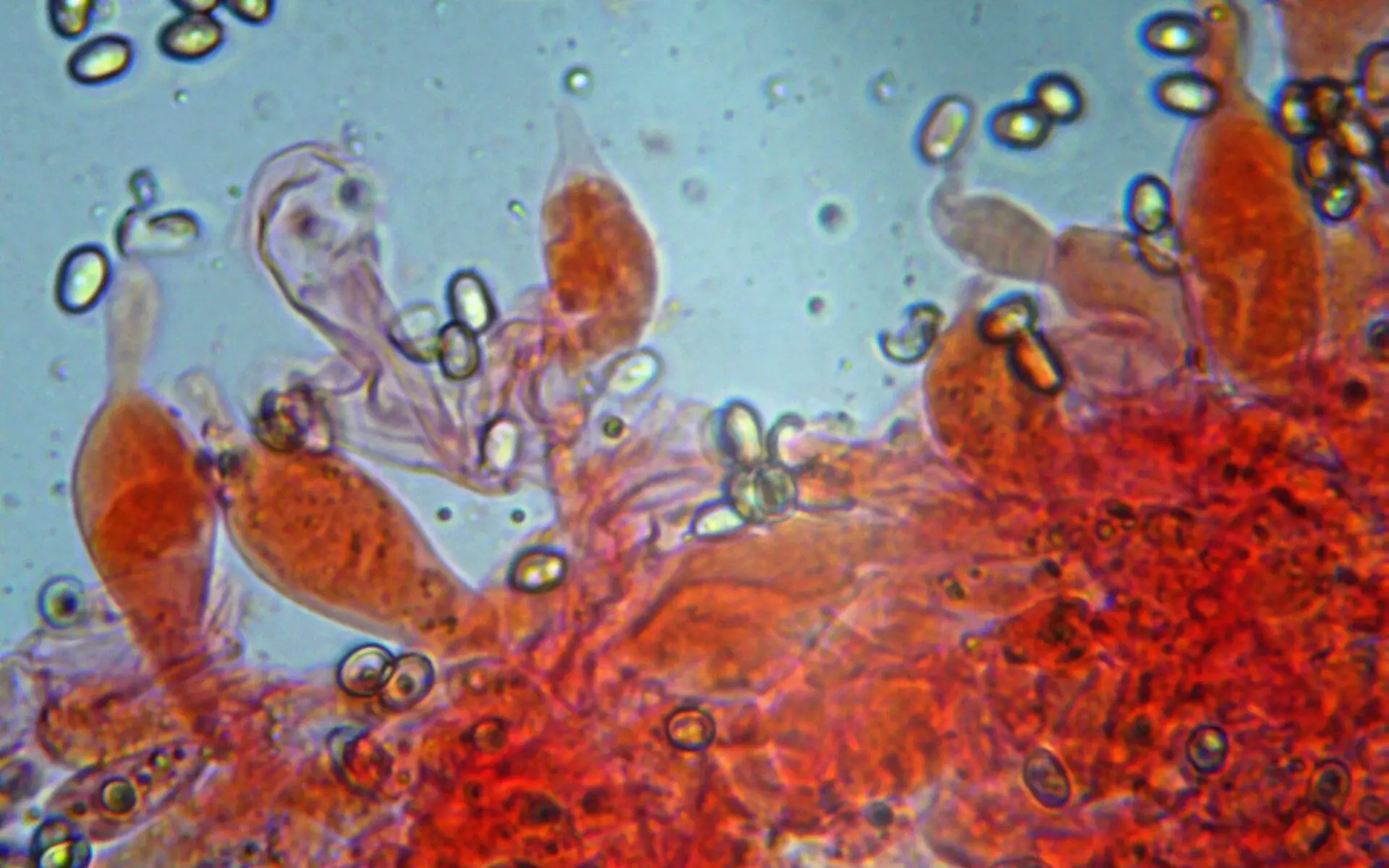
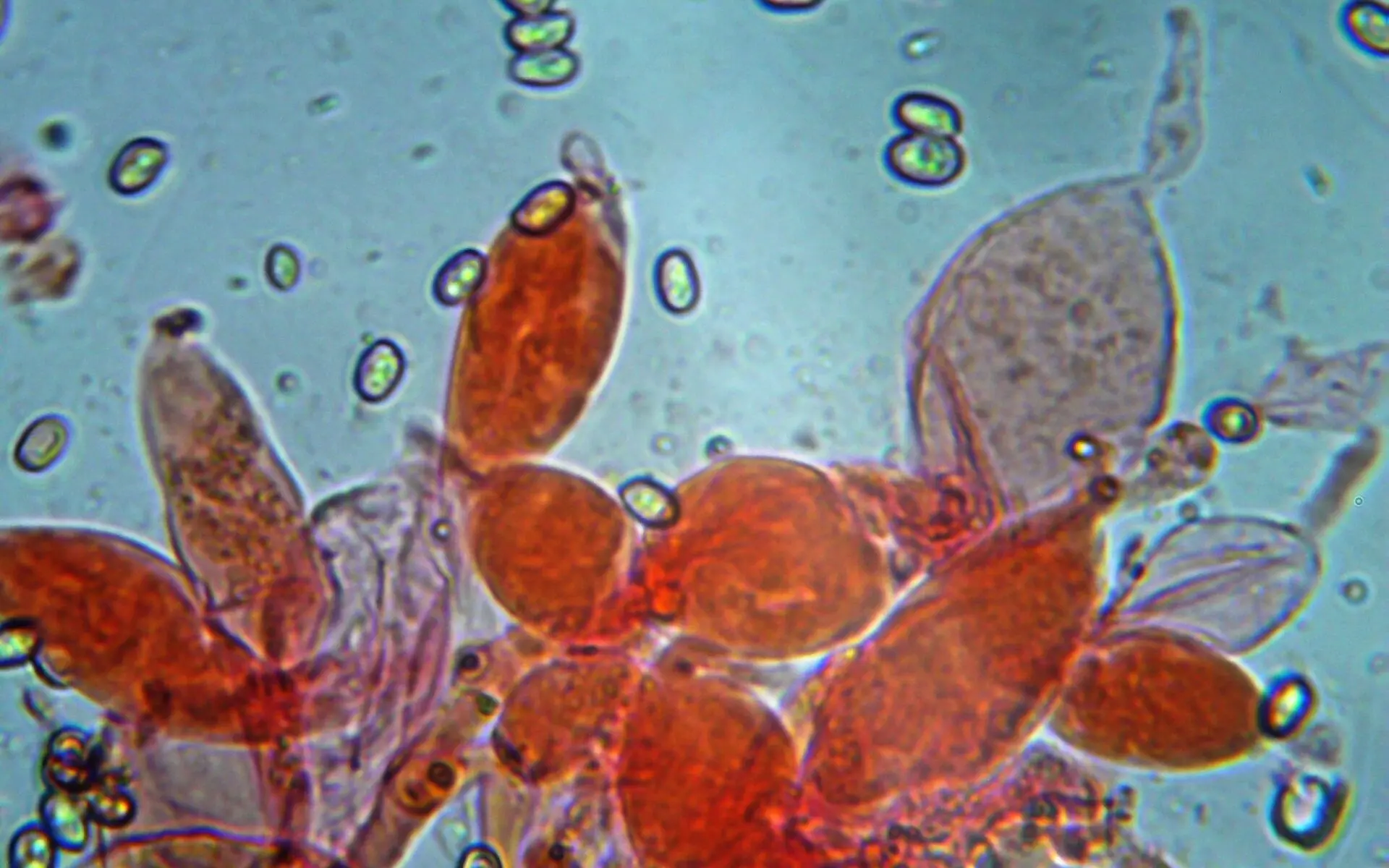
It grows on heavily decomposed hardwood in deciduous and mixed forests. It practically does not grow in groups, mostly singly. A rare species listed in the Red Books of a number of countries and regions of Our Country.
Fruits in summer and autumn in North Africa, Europe, Our Country. In some regions of Our Country, single finds of this rare fungus have been recorded. So, for example, in all four known localities of the Volga-Kama Reserve, it was met once.
Information about edibility is scarce and contradictory. However, due to its rarity and pungent smell, the gray-bluish volvariella is of no culinary value.
It is similar to some types of plutei, which are distinguished by the absence of a Volvo.
Floats, unlike the gray-bluish volvariella, grow only on the ground, and not on wood.
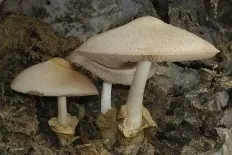
Volvariella silky (Volvariella bombycina)
differs in the whitish color of the hat. In addition, the flesh is more fleshy white with a yellowish tinge, in contrast to the thin white-pinkish flesh of Volvariella caesiotincta. There are also differences in the smell – inexpressive, almost absent in V. Silky against the characteristic strong smell of pelargonium in V. Gray-bluish.
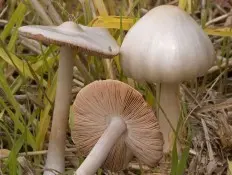
Volvariella mucohead (Volvariella gloiocephala)
differs by a smooth sticky surface of the cap, the absence of any expressive smell. V. Mucus-headed grows on the ground, preferring humus-rich soils.
Volvariella volvova (Volvariella volvacea) is characterized by an ash-gray color of the cap surface, growing on the ground, and not on wood. In addition, volvariella volvova is common in tropical Asia and Africa.
Photo: Andrey.









